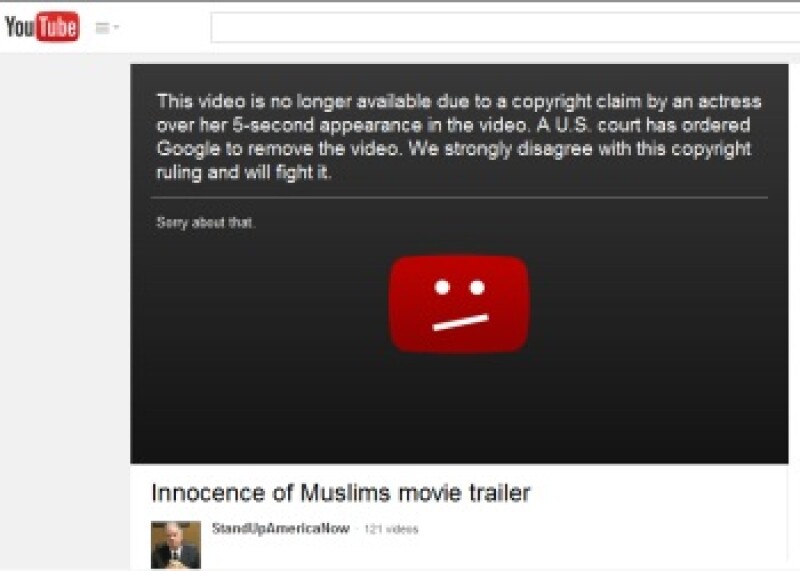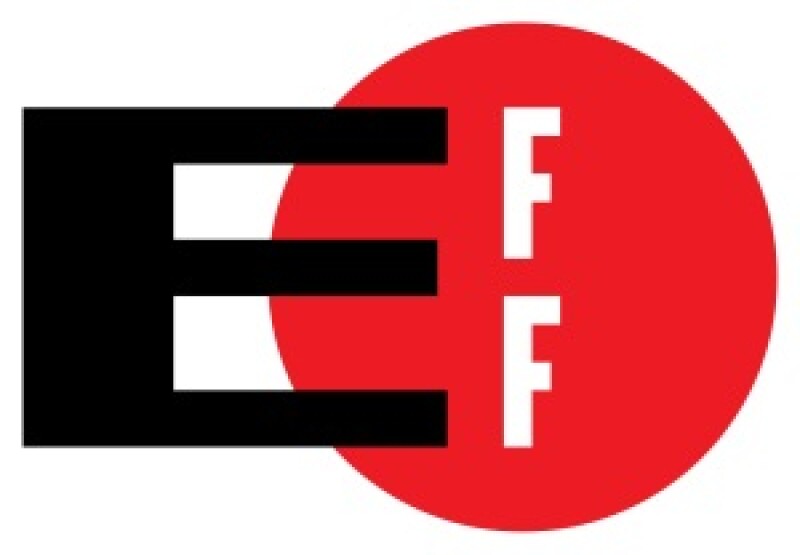
The much-anticipated en banc review of Garcia v Google was released on Monday, with the result a reversal of last February’s controversial opinion from Judge Alex Kozinski of the Ninth Circuit.
Judge Margaret McKeown made the majority’s view clear in the first paragraph of the majority opinion: “In this case, a heartfelt plea for personal protection is juxtaposed with the limits of copyright law and fundamental principles of free speech. The appeal teaches a simple lesson – a weak copyright claim cannot justify censorship in the guise of authorship.”
A movie producer transformed Cindy Lee Garcia’s five-second acting performance for a film titled Desert Warrior into part of a blasphemous video proclamation against the Prophet Mohammed. Innocence of Muslims was credited as a source of violence in the Middle East, and Garcia received death threats.
The en banc court held that the district court did not abuse its discretion in denying Garcia’s motion for a mandatory preliminary injunction because the law and facts did not clearly favour her claim to a copyright in her acting performance as it appeared in Innocence of Muslims. The en banc court credited the expert opinion of the Copyright Office, which had refused to register Garcia’s performance apart from the film. The en banc court also held that in the context of copyright infringement, the only basis upon which the preliminary injunction was sought, Garcia failed to make a clear showing of irreparable harm to her interests as an author.
The reversal received warm praise.

The Electronic Frontier Foundation proclaimed it a victory for free speech.
“The opinion makes short work of the original copyright analysis, noting that, for better or for worse, the filmmaker created the only copyrightable work at issue,” said EFF. “Indeed, the opinion observes, ‘treating every acting performance as an independent work would not only be a logistical and financial nightmare, it would turn cast of thousands into a new mantra: copyright of thousands.’”
The foundation also noted the court said that Garcia cannot show irreparable harm of the type that copyright law recognises.
Matt Schruers at the Disruptive Competition Project in a blog post welcomed the rejection of an effort to use copyright to suppress the distribution of a controversial film.
“The court’s opinion today recognized that the plaintiff could not and did not have a copyright in her five-second, otherwise-unfixed performance,” he said. “As the court put it, the activities surrounding Garcia’s unwitting participation in the film may leave her ‘with a legitimate and serious beef, though not one that can be vindicated under the rubric of copyright.’ (A separate opinion released today observed that compelling YouTube to take down the video based on threats was a prior restraint of speech prohibited by the First Amendment.)”
The Art Law Report blog declared “order restored”.
“This case reminds me in many ways of the Jenack case (concerning disclosure of the seller in an auction under New York law), in that it created an interregnum that no one expected and which threatened to upend he status quo,” wrote Sullivan & Worcester partner Nicholas O’Donnell in a post on the Art Law Report blog. “Those expectations have now been restored.”
However, some bemoaned the long time it took for the Ninth Circuit to come to a conclusion most viewed as obvious.
“It’s now 15 months later, and the Ninth Circuit has finally issued its decision – a ruling that experts had been anticipating from day one,” wrote Tom Rubin in a blog post for the Center for Internet and Society at Stanford. “The court may have reversed its injunction, but at this late date it cannot undo the damage that was done to our Constitution. The First Amendment was left to atrophy while the clock ticked away.”
Rubin noted that Judge Reinhardt in a separate opinion had called his court’s lack of urgency “violence done to the First Amendment.” Judge Reinhardt said “the exercise of freedom that was lost pending en banc proceedings cannot be recovered.”
But not all were cheering. Judge Kozinski stuck to his guns. In a strongly-worded dissent he said his order should not have been reversed.
“Garcia’s dramatic performance met all of the requirements for copyright protection: It was copyrightable subject matter, it was original and it was fixed at the moment it was recorded. So what happened to the copyright?” he asked. “At times, the majority says that Garcia’s performance was not copyrightable at all. And at other times, it seems to say that Garcia just didn’t do enough to gain a copyright in the scene. Either way, the majority is wrong and makes a total mess of copyright law, right here in the Hollywood Circuit.”
Foley & Hoag partner David Kluft has a good round-up of the en banc opinion on the Trademark & Copyright Law blog. He also notes that this may not be the last we hear of the case.
“This may be the end of the line for Garcia’s attempts to take down the video, but we’ve thought that several times before,” wrote Kluft. “Garcia still has the right to seek a rehearing (within 14 days) and/or to file a petition for a Writ of Certiorari with the Supreme Court of the United States.”
Sullivan & Worcester partner Nicholas O’Donnell also noted this. “Interestingly, while the result certainly telegraphs the probable outcome of the case, the appeal concerned only the injunction,” he said. “I would certainly expect the defendants to move to dismiss relying on this opinion, but the case is not actually over (yet).”
Only 30% of our content is published on our blog – to access all of our content you need to be a subscriber. We like to offer our loyal blog readers a special rate, so register your interest in coming on board as a subscriber and we will be in touch shortly









